iPod Screen Scratch Removal Revisited
January 6, 2009
Several years ago, I recommended RadTech’s IceCreme as a great solution for cleaning up your iPod’s scratched-up screen. While I still stand by my results and recommendation, IceCreme isn’t the sort of thing you can find at a nearby store, and is also a little pricey. Removing scratches from iPods and other pocket-bound electronics remains a common problem, so I thought it would be worthwhile to test some of the other available options. Additionally, since nicks and scratches occur on more than just the screen, we’ll also test the solutions elsewhere on an iPod. For this little experiment, I chose three solutions offering varying levels of abrasiveness: Colgate toothpaste, Brasso metal polish, and Easy-Off oven cleaner. All three promise to leave their intended surfaces shiny and clean, and in the case of the latter two, free of scratches. We’ll see how each fares when put to use on both the front plastic and back metal of an iPod.
To keep things clear, each polish will be used in a masked-off area, hopefully leaving a clear division among the results. The target iPod is an already well-used 4G 20GB iPod, with most of its still working inner parts removed and replaced with padding just to help sustain its form while being polished. Donated to the cause, this iPod will be beat up even further, with even layers of light scratches, heavy scratches, and deep cuts, simluating everything from normal wear to keychain induced destruction. It has surely seen better days, and is now destined for that great Apple Store in the sky, all in the name of science. I started with Brasso first, since it has been recommended many times since my last scratch removal post, both by commenters and firsthand accounts. If you’re attempting this yourself, be sure to work in a well ventilated area, as Brasso smells very strongly of ammonia, and might start to irritate your eyes after a short while!
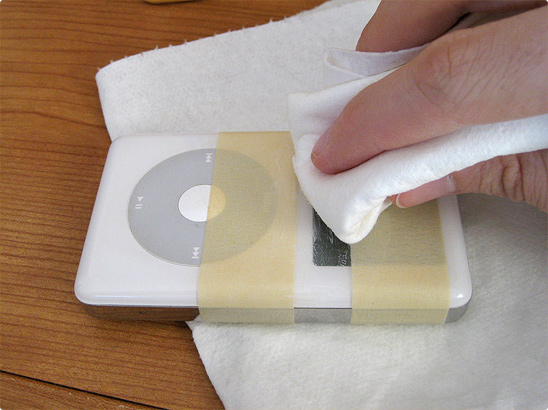
After only five minutes of polishing, the results were quite good, with nearly all of the light and medium scratches completely removed from the screen area. Deeper cuts remained, though their rough edges were significantly smoother.
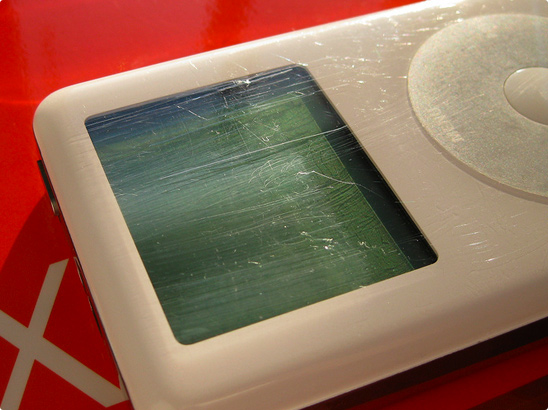
Toothpaste was next on the list, and while it left the iPod minty fresh with a sparkling shine, its scratch-reducing effects were barely noticeable. Due to its sticky consistency, it was also more difficult to polish with than the more liquid Brasso, yielding poorer results for double the effort – a total flop. Oven cleaner was last, and I really had no idea what to expect with it. Claiming to leave glassy surfaces shiny and free of scratches, it sounded like a possible winner. As it turns out, it’s not much more than a repackaged kitchen cleaner, resulting in a streak-free but still heavily scratched iPod. I’ll end up cleaning my glass top oven with this one, and nothing else. With the front of the iPod clearly showing Brasso as the top choice, it was time to see what worked best on the scratched metal backing of the iPod.
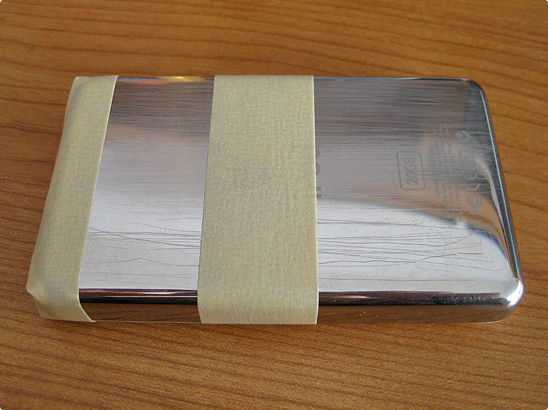
Again, after just a few minutes with each polish, Brasso came out on top, while the other two trailed woefully behind. The Brasso-polished back still had quite a few scratches, though far less pronounced than when I started. All of them, including the deep cuts, had a very slick feel, whereas the others still left the surface pretty rough.
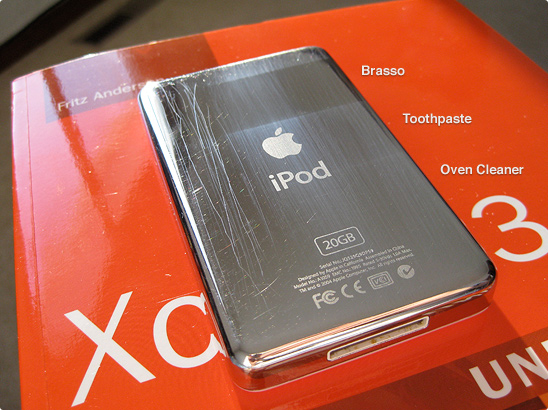
Convinced that Brasso was the right choice, I went back and finished off the front, cleaning up all but the most severe marks on the screen.
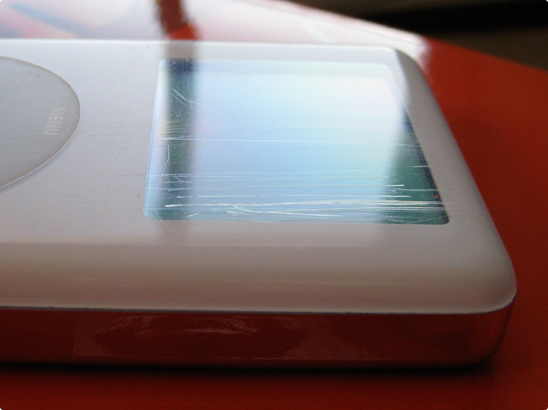
Given the results of my tests, I can easily recommend Brasso as a great iPod polishing solution that can be had for under $3 at your local stores.